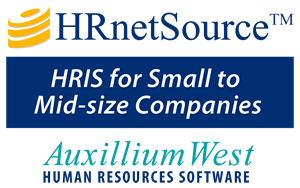Performance
Management
Purpose of Process:
Performance Management is a process to establish individual employee goals and responsibilities in support of organizational goals. It encourages communication between the employee and manager to assess and improve performance.
Recommended Steps in the Process:
- Top management develops long range strategic goals. Based on
the strategic goals, top management develops annual goals.
- The head of each division or functional organization develops
annual goals for their organization to support the top level
annual goals. The goals are entered onto a performance
management form (sample attached) and
the form is signed by the division manager and the president.
- The head of each division and functional organization informs their direct reports of their goals and instructs them to develop performance goals in support of the higher level goals. The goals are listed on a performance management form.
This process continues (for four to eight weeks) until every employee in the company has completed a performance management form. The performance management form should contain:
- Performance goals that are:
- Mutually defined and prioritized between the manager and subordinate,
- Challenging yet realistic,
- Specific, measurable (define the measurement criteria), and observable (you can see the results), and
- Targeted toward completion dates.
- A list of specific skills, resources and support needed to
achieve performance goals.
- Input from customers (internal and external) on performance
goals.
- A list of mutually agreed upon customers, suppliers, and/or
peers who will be solicited for feedback on performance.
- A career planning summary and a list of career development goals (see Career Counseling process).
Review performance results regularly (at least semi-annually) during the review cycle:
- Document significant milestones concerning goals, expectations, achievements, individual development, and other aspects of performance.
- Consider whether some goals and expectation need to be modified, or new ones added.
- Mutually evaluate progress made in achieving goals.
- Reevaluate priorities.
Conduct a final performance review immediately after the close of the review cycle.
- Each employee should draft an assessment of their performance,
noting successes and areas for development, and summarizing the
results of mid-cycle reviews.
- The manager collects feedback from the agreed upon set of
customers, suppliers and peers.
- Each employee and their manager should mutually agree on the
performance assessment.
- The performance management form is completed, signed, and sent
to Human Resources for inclusion in the employee's personnel
file.
- The salary review process begins immediately after the conclusion of the performance management process.
Process Tips
Publicize the performance management process and encourage managers and employees to continually assess performance management goals and accomplishments. Set target completion dates for completing performance goals and final performance review. Track how well each organization is meeting those goals, to encourage their timely completion.
Implementing a Performance Management process can represent a significant change for the organization. Careful planning and preparation will help ensure a smoother implementation. Consider using these steps in designing, developing and implementing a Performance Management plan:
- Choose a design team - members should work well together and be respected by employees and managers.
- Justify the need for change - communicate the value of the change to all employees
- Inform others of the progress - this will help set expectations and maintain management support
- Collect input from others - continuously collect input from employees and managers to help ensure their support of the final product
- Limit Complexity - many design teams become distracted by details such as specific wording of performance categories - keep the focus on the main objectives and avoid creating a overly cumbersome process
- Pilot the program - this step is more appropriate for larger organizations - it provides the opportunity to identify design flaws and organizational barriers
A set of traditional Performance Appraisal forms is included with this product. These forms can be used in place of the Performance Management form, although the Performance Management forms are recommended. The weakness of these traditional Performance Appraisal forms is the lack of emphasis of goal-setting and mutual discussion between the employee and manager.
How HRnetSource™ Can Help:
HRSource™ and SelfSource™ help support the implementation of Performance Management and monitor the results:
- Allows HR to create unlimited number of performance categories
- Each performance can contain multiple performance statements that describe different aspects of the performance categories
- HR can designate which performance categories and statements are applicable to which job groups, allowing HR to create multiple reviews.
- Employees complete a self-evaluation in SelfSource™ to begin the new cycle. When completing the self-evaluation, the employee refers to previously established goals
- SelfSource™ automatically populates the employees review with performance statements based on their job group
- Manager reviews the employee self-appraisal and then rate and comment (optional) on each performance statement.
- Managers can review historical performance evaluations through SelfSource™.
